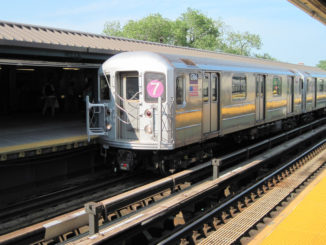The Metro-North train that crashed Sunday in the Bronx and left four people dead was traveling 82 m.p.h. as it took a curve with a speed limit of 30 m.p.h., various media reported today.
The National Transportation Safety Board is investigating whether human error or brake failure is to blame, The Associated Press reported. But, the NTSB said on Twitter there “were 9 station stops prior to the derailment. We are not aware of any prior issues with the brakes.”
“The zone leading up to that curve is 70 miles per hour and yes, there was an excess of speed,” The Associated Press quoted NTSB member Earl Weener as saying.
Four people were killed and more than 60 others injured when the Manhattan-bound Metro-North train derailed at about 7:20 a.m. just north of the Spuyten Duyvil station, according to various media reports.
“The train was going like pretty fast, and as it was turning the corner it just felt like it was going like out of control,” the Wall Street Journal quoted one of the train’s passengers as saying. “It started to like speed up and feel a little out of control, like one or two seconds before it derailed.”
Five of the train’s seven cars derailed. The train, which originated in Poughkeepsie, was due to arrive at Grand Central Terminal at 7:43 a.m.
“This was a tricky turn on the system, but it’s a turn that’s been here for decades and trains negotiate all day long,” New York Gov. Andrew Cuomo told NBC’s Today earlier today, Buzzfeed reported. “It’s not about the turn. I think it’s going to turn out to be about the speed more than anything, and the operator’s operation of the train at that time.”
The rail cars and locomotive will be moved to a secure location for a more detailed examination over the next few days, the NTSB said on its Twitter feed.




